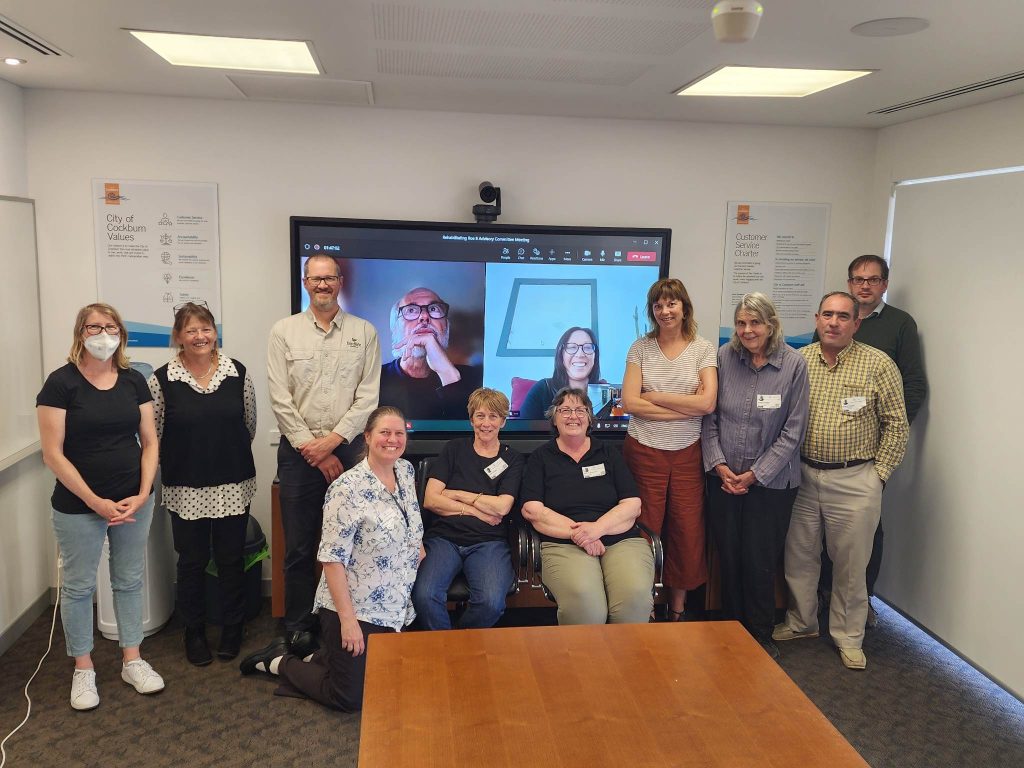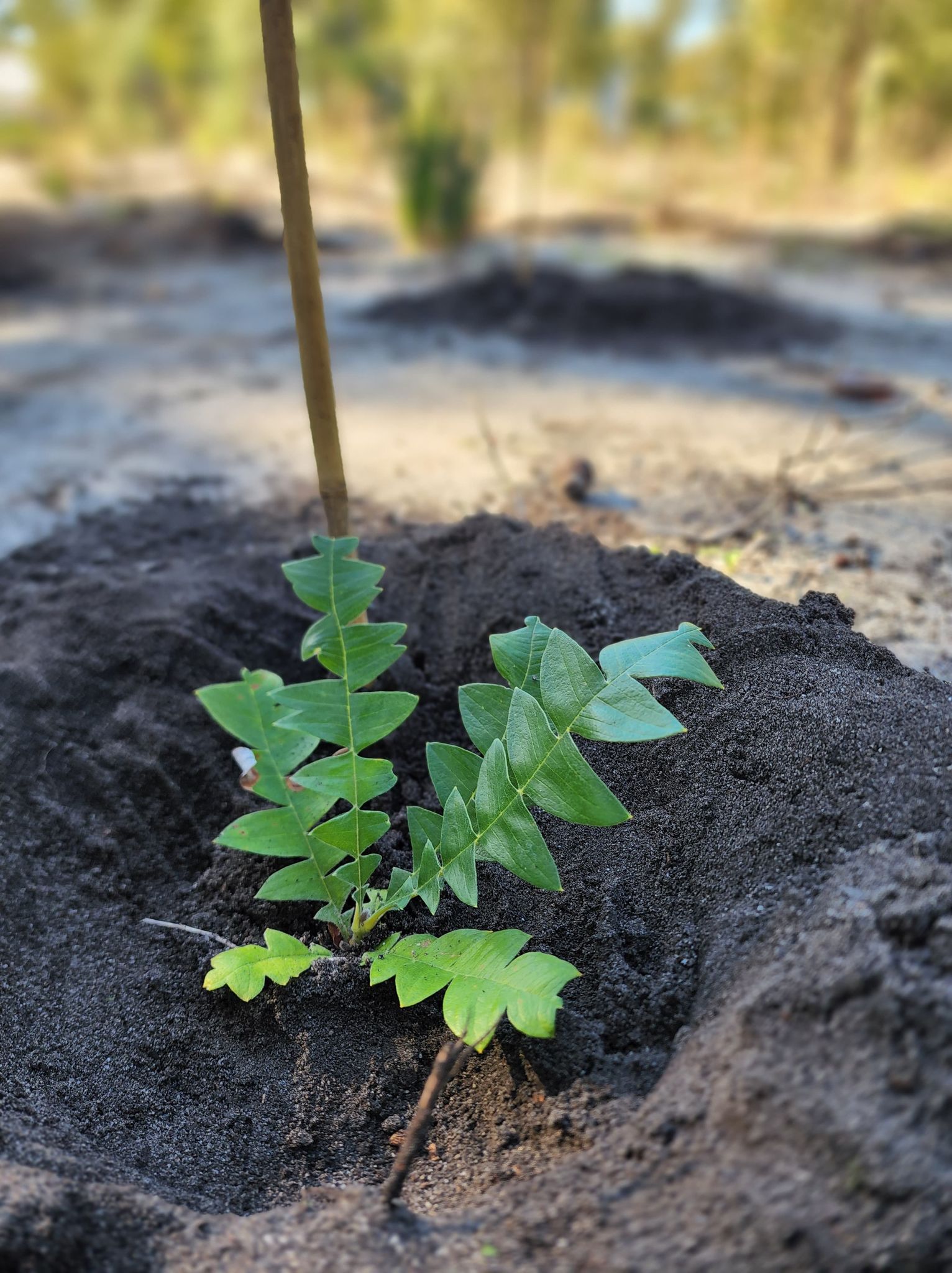Rehabilitating Roe 8 Advisory Committee 2022

Rehabilitating Roe 8 Working Group
Clearing for Roe 8 continued right up until the week before the March 2017 state election, only ceasing with a change of government. In the immediate aftermath, the local community kept fencing around the cleared areas upright and reported trail biking and four-wheel driving to protect regrowth.
In May, weekly meetings of the Rehabilitating Roe 8 Working Group commenced with representatives from the Ministers of Transport and Environment, local MPs, the City of Cockburn, the Conservation Council of WA, the Community Wildlife Corridor, Aboriginal custodians, the Cockburn Wetlands Centre, Department of Biodiversity, Conservation and Attractions, Office of the EPA, Main Roads WA and the construction Alliance. While the future of the site was considered, Main Roads WA organised remediation works including weed management, asbestos and mulch pile removals. Murdoch University ecologists commenced vegetation monitoring.
Rehabilitation Management Plan
The state government committed to fund a ten-year project to rehabilitate the Roe 8 corridor. A Steering Committee with both community and scientific membership defined goals for a Rehabilitation Management Plan (RMP). Over 2017, the Perth Urban Restoration Scientific Advisory Committee (PURSAC) met fortnightly to provide input into the development of the RMP. This group included scientists and academics with expertise across ecological restoration, conservation, fire science, communication, science education and community relations.
Emerge Associates were engaged to prepare the RMP, conducting community and stakeholder engagement and providing a draft in late 2017. Following extensive feedback from the Steering Committee, PURSAC and community groups, the Minister for Transport accepted the final plan in June 2018. The City of Cockburn agreed to implement the RMP on behalf of the State Government and the community, via a rolling agreement with Main Roads WA.

Banksia seedling (Photo: C. Athanassiou)

Community Planting Day at Tait Place 2023
Implementation
The RMP had ambitious aims to restore both the environment and the community. Seed collection, weed mapping, an invertebrate survey, community weeding and planting events all occurred within a few months of the project start up in July 2018. The Rehabilitating Roe 8 (RR8) Advisory Committee held its first meeting in February 2019 and continues to ensure the community is fully involved in adaptive management of the RMP.
Bi-monthly newsletters, the first RR8 Annual Report and a Cultural Management Report were produced in 2019 and the first Annual Community Questionnaire conducted in 2020. Open Days, two community science conferences, citizen science fauna monitoring, Aboriginal community engagement sessions and guided walks were among the many activities organised by RR8. In 2020 an Aboriginal Archaeological and Heritage Survey was commissioned. Weed management, fencing and restoration planting have been conducted by contractors and community members. Each year of the project so far, thousands of plants have been installed, with 90,000 in 2021 alone. Consultation for a path network through the corridor commenced in 2021 with the first limestone paths and universal access gates installed in 2022.
Beeliar Wetlands Bill
In 2021 the Metropolitan Region Scheme (Beeliar Wetlands) Bill rezoned the bushland between Bibra Drive and North Lake Road as nature reserve. The Cockburn Community Wildlife Corridor group continue to advocate for more of the Roe 8 corridor to be set aside for conservation. New groups like the Karak Cooby Bushcarers continue the grassroots community connection to the corridor with hands-on landcare.

Spectacular Melaleuca sp. following successful revegetation.
